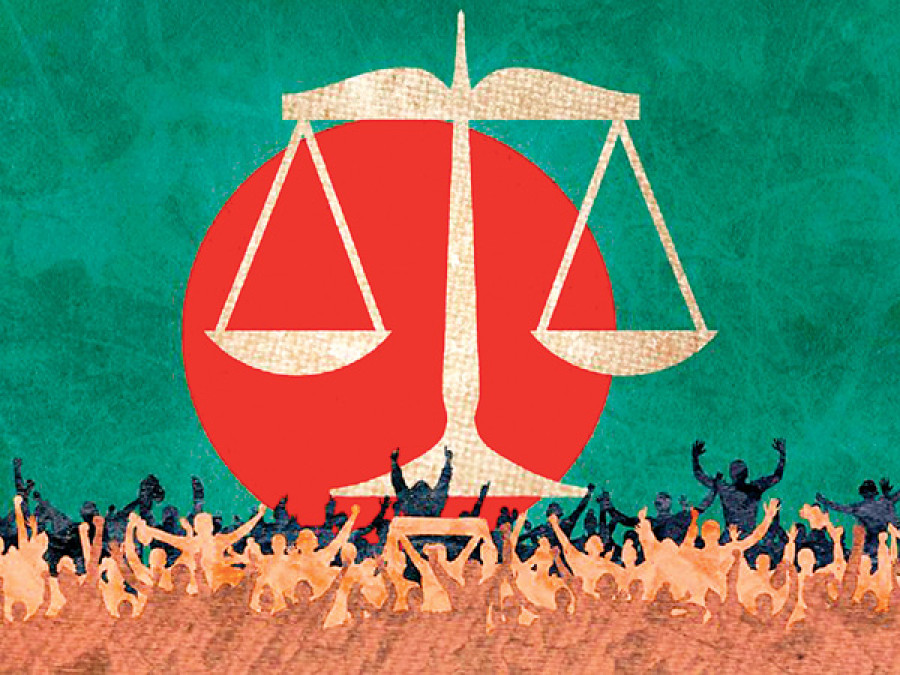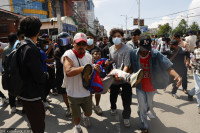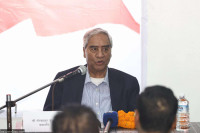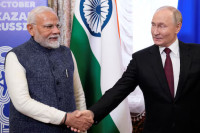Opinion
Lessons from Pakistan
A theocratic monolithic system drove a wedge between the state and the people
Kalpana Jha
South Asia was swept by protests calling for ethnic autonomy with the end of the colonial era. The convulsions led to the formation of two new states, Pakistan and Bangladesh. Pakistan was created as a theocratic state quintessentially conceptualised to be a protectorate for Muslims under threat in Hindustan. Meanwhile, Bangladesh was a counter-product of this limited inception of the idea of Pakistan that failed to cater to the interests of diverse ethnic sentiments and the then geo-politics.
Nepal’s modern history, defined by a rather tumultuous journey from autocracy to democracy, is much comparable to that of Pakistan. The defining period of statehood and the nature of governance occurred during the rise of the Mahendra Doctrine. It believed in the idea of his ancestral legacy of Asali Hindustan, establishment of the only Hindu country in the world, promotion of one language, that is Nepali which was spoken by a minority high-caste hill elite, and propagation of an extremely centralised state, much like the one imagined for Pakistan by Jinnah who defined a strong centralised state characterised by Islam and Urdu.
The rise of such a theocratic and monolithic idea not just created a breach between the state and the people but also relegated those who did not conform to this forced identity to the status of second class citizens. In Pakistan, this doctrine downgraded Bengalis and the policy of making Urdu the compulsory medium of education was a serious blow to the long established rich Bengali language, culture and traditional foundation. This also made access to education for Bengalis almost minimal, and their presence in the state structure negligible.
This is comparable to the situation of Madhesis in Nepal where, in addition to a monolithic identity, acquiring citizenship was made impossible for Madhesis as the ability to read, write and speak Nepali was made mandatory. This not only turned them into second class citizens but also relegated them to the status of people of lesser worth. This desperate attempt to create a monolithic, centralised and theocratic state was guided by the fear of a decline in the social status of the minority ruling elite. The era of the Mahendra Doctrine was also marked by the internalising of anti-India politics to define Nepali nationalism.
The unprecedented repercussion of this was borne by Madhesis who were labelled as Indians and treated like colonised people. One of the most revealing examples of this is the way revenue is shared. While Nepal’s Tarai produced 90 percent of the food grain and generated the maximum amount of revenue, its share of development funds was almost nil, and all the income was channelised to Kathmandu. It is much like the case of East and West Pakistan where all the revenue generated in East Pakistan was used for the development of West Pakistan.
Like Pakistan, Nepal has seen multiple coups at the hands of the monarch who was also the commander-in-chief of the army. Amid these coups d’état which happened every 10 years, some politicians have fought for democracy. However, the co-option of the leaders with the ruling regime has been apparent during every effort to institutionalise democracy. It has never been possible to pull the leaders away from their unscrupulous pursuit of power to promote progressive, political and social reforms in a decisive manner. This has so far been the defining feature of Nepal’s political trajectory.
After Jana Andolan II
During the nine years Nepal spent in drafting the Constitution, unscrupulous manoeuvrings for power by leaders and bureaucrats led to a loss of initiative for democracy. Moreover, the Constitution delivered through this beleaguered process guided by devious motives can at best be defined as regressive. A compelling example is the federal model carved in complete contradiction to the demands of Madhesis. Tarai provinces were merged into Pahad provinces much like the ‘one-unit approach’ adopted by Ayub Khan of Pakistan which merged East and West Pakistan territories much to the offence of Bengalis. The reservation system was waylaid to complement the one-unit approach. The 40 percent reservation for Bengal was divided among Punjabis and West Pakistan provinces and Bahawalpur as per the provincial demarcation that did not translate into any benefit for Bengalis vis-à-vis catching up with the dominant Punjabis. These factors culminated in the secession of Bangladesh.
In the same way the one-unit approach worked in Pakistan, Madhesis have been made a minority in almost all the provinces except Province 2. The 45 percent proportional representation doesn’t do much good to Madhesis as it includes historically privileged groups like Khas-Arya and general groups like youth and women. Such an ambiguous approach has ensured over-representation of the dominant community. Nepali leaders do not need to think about economic and social reforms and can engage in the pursuit of power and cultivate populist nationalism based on anti-India sentiments. Nepal has successfully managed a large exodus of youths to foreign countries which has prevented extremism from growing.
However, such futile tactics do not provide a sustainable solution. Unlike in Pakistan, the chances of secession are negligible in the given geo-political scenario, but the growing influence of the Alliance for Independent Madhes (AIM) led by CK Raut on the youths in Madhes cannot be overlooked. Therefore, secession or no secession, it has turned Madhes into a hotbed of conflict. In addition, the army-elite nexus that unfolded during Madhes Movement 3 does not provide any better prospects either. Importantly, the army is still a long way from assuming the role of a civilian army while its integration into the civilian ambit is an important determining factor of democracy. Pakistan provides a fine example of what such a failure can lead to. Nepal at the moment is passing through a fragile democratic transition. If not handled with caution, it is not unlikely that Nepal will descend into an endless loop of instability.
Jha holds a master’s degree in Social Work from Tata Institute of Social Sciences




 10.12°C Kathmandu
10.12°C Kathmandu








%20(1).jpg&w=300&height=200)

